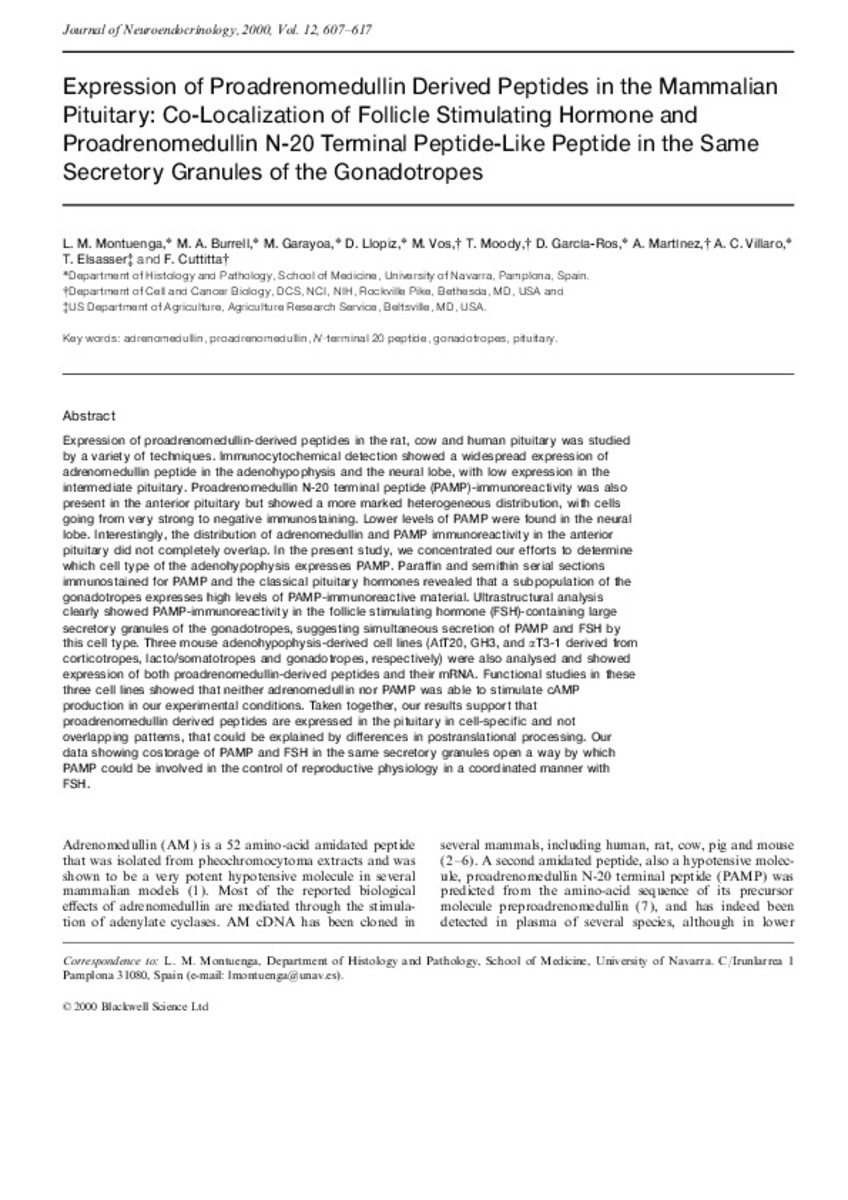Expression of proadrenomedullin derived peptides in the mammalian pituitary: co-localization of follicle stimulating hormone and proadrenomedullin N-20 terminal peptide-like peptide in the same secretory granules of the gonadotropes
Keywords:
Adrenomedullin
Proadrenomedulli
N-terminal 20 peptide
Gonadotropes
Pituitary
Publisher:
Blackwell Publishing
Citation:
Montuenga LM, Burrell MA, Garayoa M, Llopiz D, Vos M, Moody T, et al. Expression of proadrenomedullin derived peptides in the mammalian pituitary: co-localization of follicle stimulating hormone and proadrenomedullin N-20 terminal peptide-like peptide in the same secretory granules of the gonadotropes. J Neuroendocrinol 2000 Jul;12(7):607-617.
Statistics and impact
0 citas en

0 citas en

Items in Dadun are protected by copyright, with all rights reserved, unless otherwise indicated.










